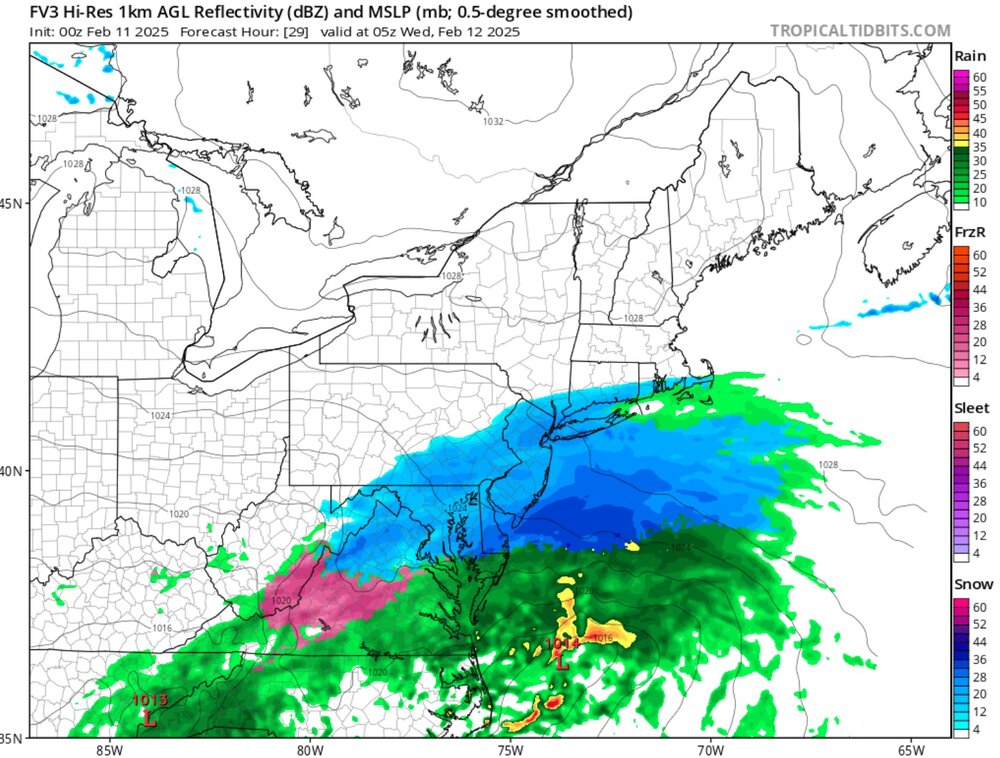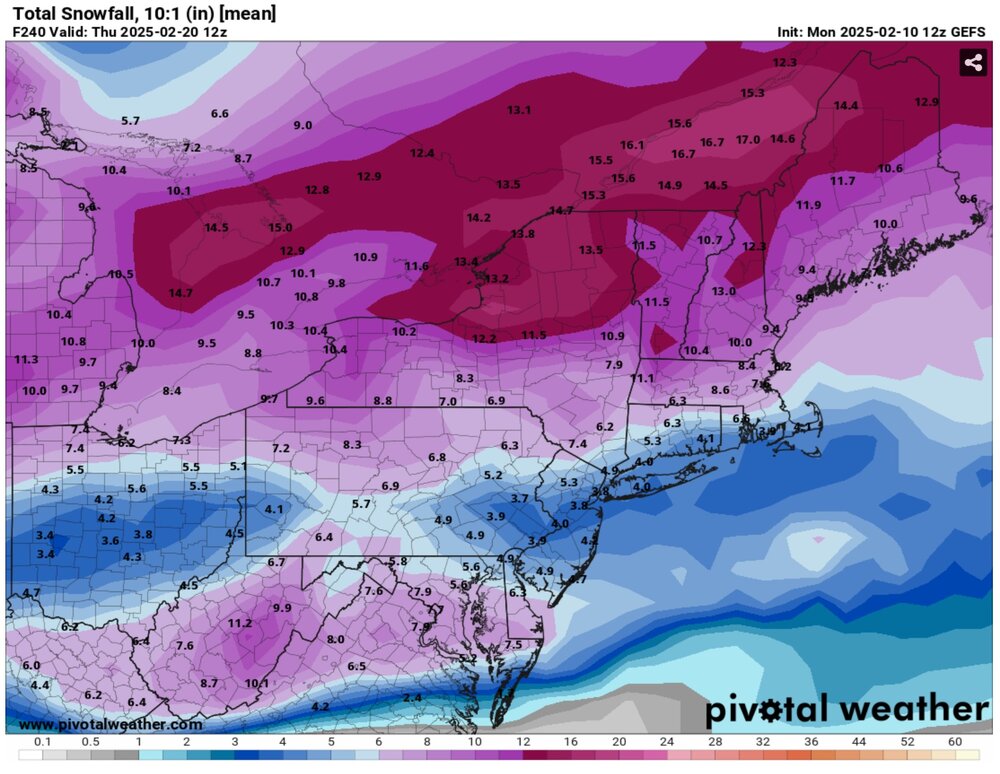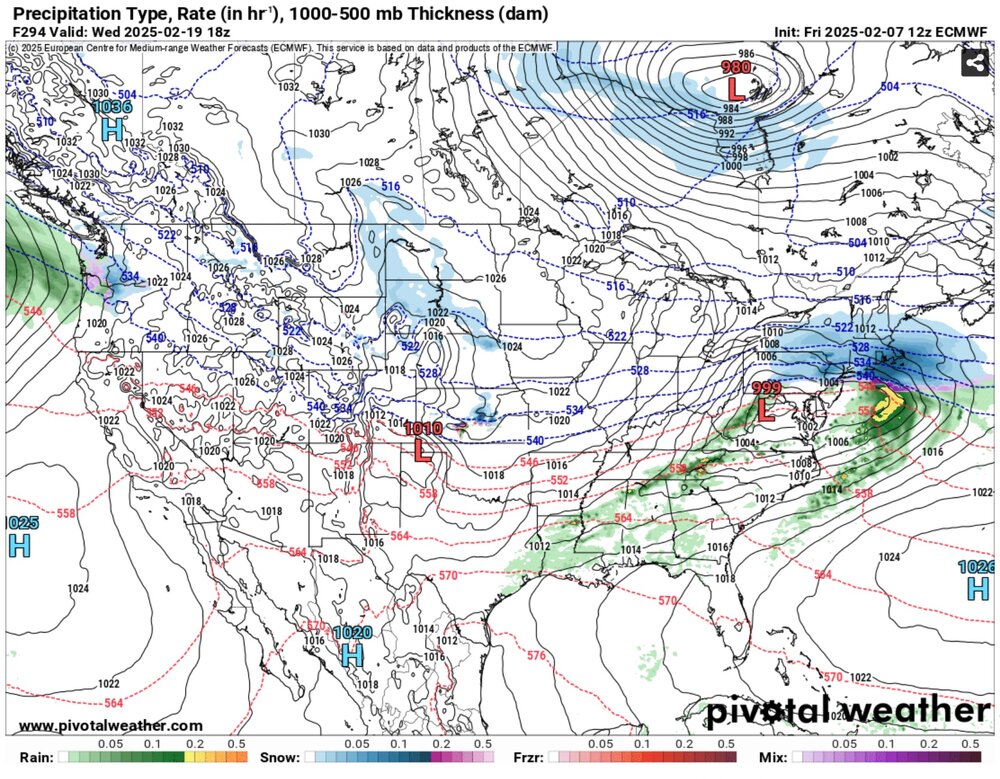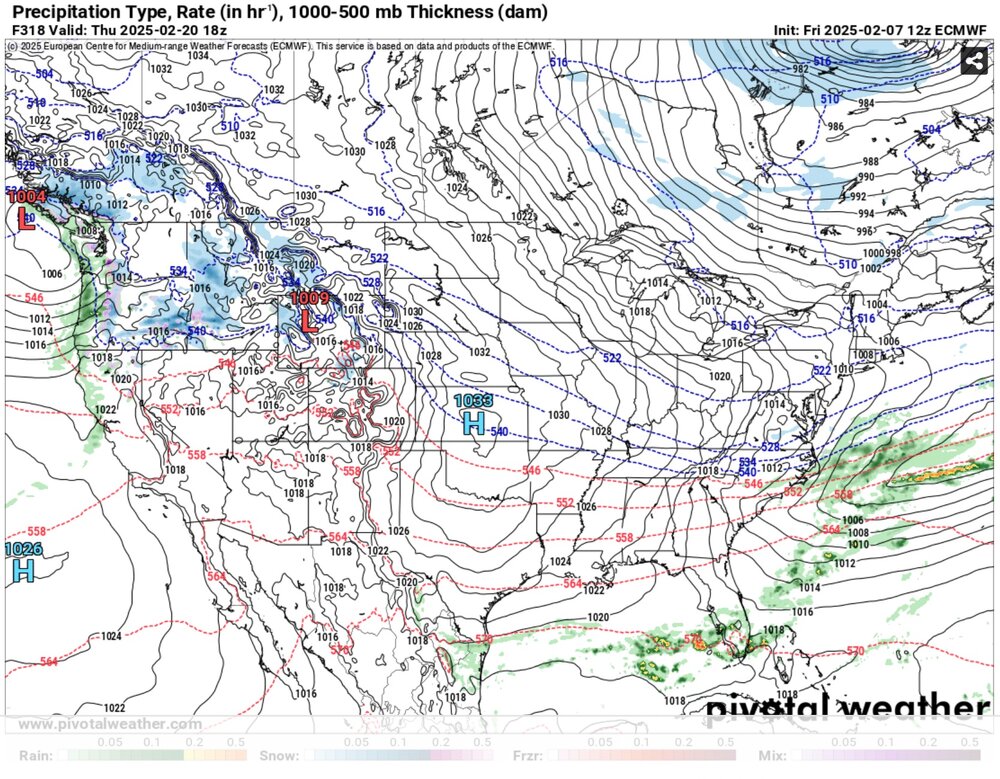
eduggs
Members-
Posts
5,230 -
Joined
-
Last visited
Content Type
Profiles
Blogs
Forums
American Weather
Media Demo
Store
Gallery
Everything posted by eduggs
-
The 0z EPS included only a few members with SLP that tracked west of us. A few more that tracked close enough to mix, and the majority with an ideal track or east. None would be considered cutters. GEFS has only 1 close pass. All options are still viable at this range, but a miss east has to be considered the more likely outcome at this juncture.
-
Everything always looks clear in foresight. And then in hindsight we can see what went wrong: block in wrong location, too warm, southeast ridge too strong, western ridge not amplified enough etc. If only we could see exactly how things would evolve over the next 10 days. Then we would know exactly when to get excited.
-
Isolated severe?
-
We'll see how it looks this weekend. Fingers crossed.
-
This week has really gone to shit snow wise. Now that I've reconciled and accepted that, any positive trend or positive bust will feel glorious.
-
My wife and I finally made it to Bolton to explore the backcountry network this past weekend. It's a wonderful thing they have created up there and the people in the NBC are really nice. The snow conditions and weather were great on Saturday. But I was not expecting a super-highway in place of a traditional skin track. We did several laps to the most distant areas on the map we could find and found loads of skiers everywhere. We found a few places where you could make two or three really nice powder turns, but most areas we found were heavily tracked out. Most of the glade areas funnel skiers to relatively narrow spaces so it's difficult to spread people out. Requiring skinners to stay on trail also creates long queues that feel more like in-bounds hiking than tranquil backcountry ski touring. What I learned (or rather confirmed) is that 1) the area is doing very well snow-wise this winter and 2) you really have to avoid weekends if you can. It's probably also really helpful to venture out with locals who know the area extremely well. It met numerous beginner ski tourers... lots of families with kids, which is really encouraging to see. Also checked out in-bounds Bolton and Sugarbush and holy moly is it crowded up there. What a circus.
-
I don't know how you can say that considering the sea of WSWs posted just south of our area. Even a weak shortwave... just a minor kink in the longwave flow... could have shifted the Tuesday event far enough north for a moderate snowstorm. My bar for "high-end" is relatively low. I'm talking 6" of non-mixing snow. Not a blockbuster. You are talking with the clarity of hindsight. We cannot definitively see threat magnitudes more than a week in advance. We can only really talk about likelihoods. Yes a favorable PNA trof is helpful for large events. But it is not required.
-
Nothing high-end to track through this period. Thump still on track for Wed night. But big threats mostly fizzled. Same story since 2021 I believe.
-
There were dozens of GFS ensemble runs last week that showed a range of mean 10-day snowfall totals for NYC... something like 6-15". As was pointed out multiple times, the 10-day total included a parade of mostly minor events. Some areas are running a little ahead of the multi-day ensemble consensus and other areas a little behind. What's missing is the 6" snowstorm as the cherry on top.
-
I neither downplayed nor hyped this event. Since I was out of the area, in an effort not to get emotionally drawn in, I largely ignored it. There were local winners and losers for sure, as often happens. The Hudson Valley from Orange/Putnam all the way to Albany didn't do as well as some modeling indicated. PA didn't get much. But LI did really well. It was a short-duration, high intensity event... which can be quite enjoyable. High impact despite modest snow accumulations.
-
For Thurs, it actually helps that the shortwave has sharpened and trended so far northwest since it puts the main surge of warm air into OH and WPA and leaves plenty of room for CAD. The energy is kind of split with some heading up into Ontario and another area of nice vorticity and UVV sliding through our area Wed night. With a different evolution this might have been a significant snowstorm. As is, it could be a solid plowable (thump) event similar to Sat night, but with the local maxes possibly shifted around somewhat.
-
Actually I don't believe I commented on last storm since I was away for it. I was focused on the one before and the one after. Locally we got about 2" and then ice early Sunday. It's a glacier. Looks nothing like the north country where even northern fringe areas got several inches of perfect fluffy powder. From reports it looks like LI and CT did well on Sunday.
-
A sharp shortwave over Lake Huron with associated intense SLP on Thursday is not what we had in mind last week when the wave of threats was coming into mid-range view. The feared scenario looks to be playing out. Hopefully southern areas can score a little Tue and northern areas Thurs. Unfortunately any snow looks to take place primarily at night and ends as the all-too-familiar ice to rain. Bummer.
-
Those images are actually two time period snapshots in succession in the 12z ECM run around Feb 20th. I just posted them to illustrate that what looks good on 288hr ensemble averaged anomaly chart could easily fail to result in a snowy outcome. In fact it's more likely than not. The shortwave details will determine the result. It sounds like you are saying kind of the same thing.
-
It looks like it did for yesterday morning's event... at least when it was outside 12 hours.
-
-
Who said anything about an ice STORM?
-
If it snows in an unfavorable pattern and rains in a favorable pattern, what does favorable pattern mean?
-
It could still work out favorably. If the Tue shortwave turns out slightly sharper and surface temps stay at or below freezing, that's a moderate snowstorm right there. Possibly even with an enjoyable, partly daytime, real-snowstorm feel. If the follow up shortwave turns out slightly flatter, there is a very real possibility of another moderate snowstorm or snow to ice. This event could even turn out to have more QPF. Two significant events within two days is rare. In fact it's conceivable it goes something like 2" - 4" - 4" over 6 days including Sunday. And there's yet another wave lurking towards the LR. If forced to guess right now, I'd go with: Tue ends up a light event - C-2. And Thur. is ice to heavy rain. But the ICON 24+hr snow scenario is not off the table either.
-
Maybe not in Manhattan. But there were two icing events in the past week just outside of the concrete jungle. The upcoming "pattern" produces overrunning waves. That means mid-level warm layers and a ZR risk. The southwest mid-level flow and lack of strong SLP just make it harder to get heavy precipitation and a snow-supporting column together at the same time for more than a few hours.
-
Yup. We have to hope we cash in over the next 10 days. Long range stuff is just wishing and dreaming.
-
I'm not the slightest bit interested in the MJO index when we have multiple trackable snow threats in the mid range. With this setup, right now, if you tweak the shortwave progression and evolution, you get multiple significant snowstorms. Snow doesn't give a fck what the MJO is.









